Does it really make sense to spend money to save money? When it comes to maintenance of large capital assets including facilities, mobile assets or plant equipment, the answer is an unqualified Yes!
It makes even more sense when you consider that the cost of repairing equipment damage or failure due to deferred maintenance has become an important line item in many companies’ financial statements. Even when damage or failure isn’t a write-down item, a lack of planned preventive maintenance on aging assets encourages reactive maintenance practices that can negatively impact budgets and bottom lines. Furthermore, all three of these bottom-line hits are likely to cause downtime, which comes with its own cost calculations.
The Real Cost of Downtime
Downtime is by far the biggest challenge for any organization, regardless of business model or sector. It impacts the bottom line in more ways than one, as it has tangible and intangible impacts on profits. For instance, if your equipment goes down due to a lack of preventive maintenance, you can’t service your customer and eventually you will lose business.
To measure this impact, we’ll look at a company managing a 500-vehicle fleet, with each vehicle delivering revenue of $1,200.00 per vehicle, per day. Based on an average of 200 operating days per year, revenue expectations equal $240,000.00 per year.
If the vehicle goes down unexpectedly for just eight days a year, the lost revenue is $9,600.00. If implementing a preventive maintenance program reduces downtime by 25%, revenue generation would increase by $2,400.00. If just 10% of the fleet was experiencing unscheduled maintenance, the total revenue increase could be as high as $120,000.00.
Turning Losses into Savings: Automation with Computerized Maintenance Management Software (CMMS)
All of the financial drains listed above can be minimized, if not completely avoided, with a complete preventive maintenance program in which maintenance tasks and activities are managed and monitored with a Computerized Maintenance Management Software (CMMS). In addition to minimizing downtime, CMMS has been proven to provide the following bottom-line boosts:
- Extended Equipment Life – Obtaining longer life from all assets means greater shareholder value and increased cash flow.
- Reduced Inventory Costs – Knowing what parts are available and when to order prevents costly overstocks and shortages.
- Strengthened Safety Practices – Work orders can include safety tasks for proactive safety and better compliance.
- Increased Warranty Awareness – Management knows what’s under warranty and avoids or reduces repair costs.
- Streamlined Regulatory Compliance – Capture any regulatory information within the CMMS to facilitate reporting to government and regulatory bodies.
- Centralized Reporting – Facility management can’t measure what it can’t see. A centralized system enables data capture and reporting that drives initiatives to reduce manpower and paper flow.
- Improved Workflow – An integrated package automates data transfer among other software packages such as accounting, fuel card systems, HVAC monitoring and much more, facilitating even greater insight and reporting.
- Shared Knowledge Base – One centralized system, if integrated with accounting, purchasing and other legacy systems, can simplify real-time information sharing across the enterprise.
- Enabled Mobility — Using mobile devices within the CMMS promotes faster response times, greater uptime and reduced greenhouse emissions.
We have now reviewed how a comprehensive maintenance program, automated via a CMMS, can shave expenses in many areas, turning cost centers into bottom-line savings. For more information, including details on what a centralized CMMS package could do for your firm, please visit Fast ROI and Hard Savings – Web Work Azzier.























































